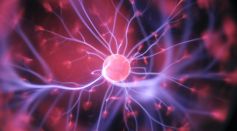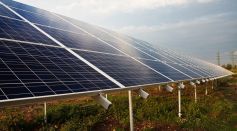ENERGY
Pee-Powered Renewable Energy Perfected; Scientists Show How Urine Can Help Purify Wastewater

Calcium Imide: Catalyst To Extract Hydrogen Fuel From Ammonia; Step Towards Efficient Green Energy Harvest
Janus Graphene: Asymmetric, Two-Faced Material Could Turn Sodium-Ion Batteries Into Sustainable Energy Storage
Biofuel Extracted from Hazelnut Shells Show Potential as Renewable Energy Source

Heart's Kinetic Energy Could Power Lead-Free Artificial Cardiac Pacemaker for Implant

Nuclear Fusion Test in Lab Hailed as Holy Grail in Quest for Clean Energy
Birnessite Reexamined: 'Classic" Material Finds New Potential for Electrochemistry, Energy

Targeting 'Super-emitters' To Combat Climate Change; How Handful of Power Plants Create Most Carbon Emissions from Electricity Generation
Caltech's Space Solar Power Project Made Possible by Billionaire's $100M Donation

Nuclear Explosion: Why Atomic Bombs Make Mushroom Cloud

Inorganic Material With Lowest Thermal Conductivity Successfully Fabricated; Could Lead to Greener Energy Solutions

Hydro-Quebec Launches Its First Solar Power Plants; Panel Station Named After Its First Female Engineer
China's ‘Artificial Sun’ Tokamak Reactor Sets New World Record for Sustained Nuclear Plasma Reaction
Generating Electricity: MIT Engineers Discover New Using Tiny Carbon Particles
Most Popular

Will Earth's Magnetic Poles Flip Next? Magnetic Pole Reversal Explained Through Cutting‑Edge Magnetosphere Science

How Lightning Science Reveals Why Charged Storms Are Rising with Global Warming Effects

Relativity Time Dilation Explained: The Physics of Time and Why It Moves Differently in Space

Earthquake Magnitude vs Intensity: Key Differences Explained for Accurate Measurement




